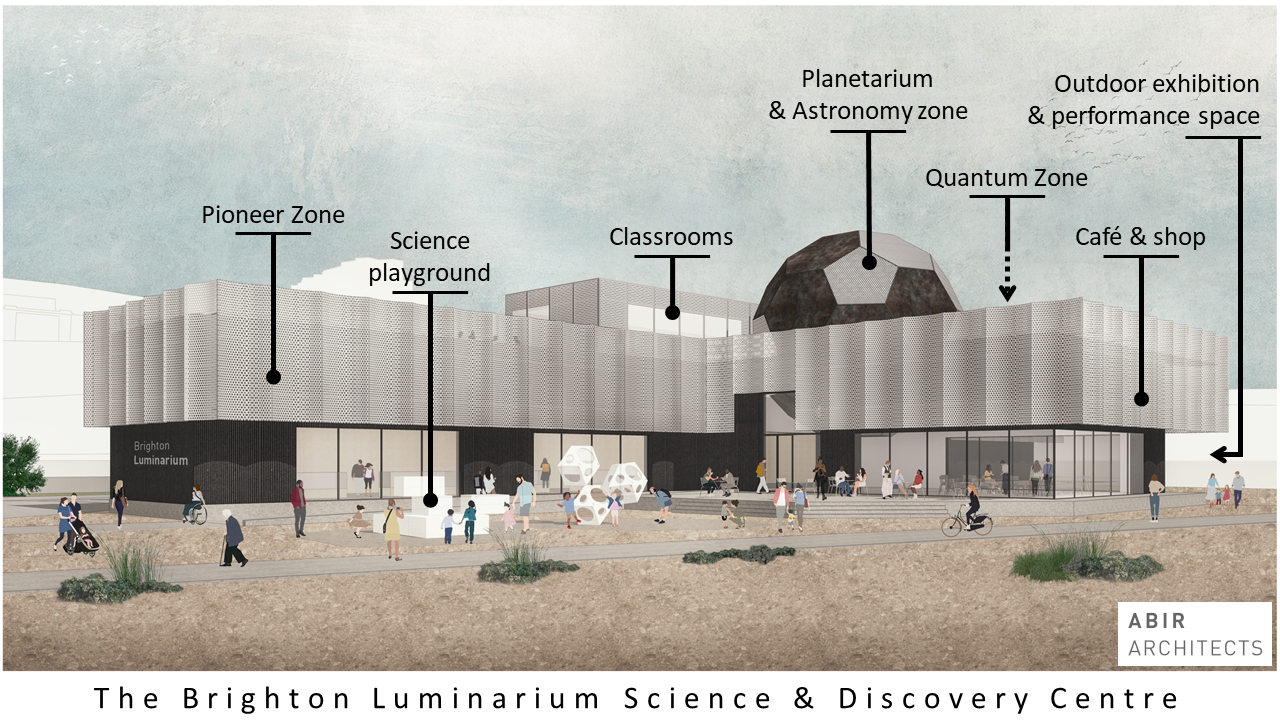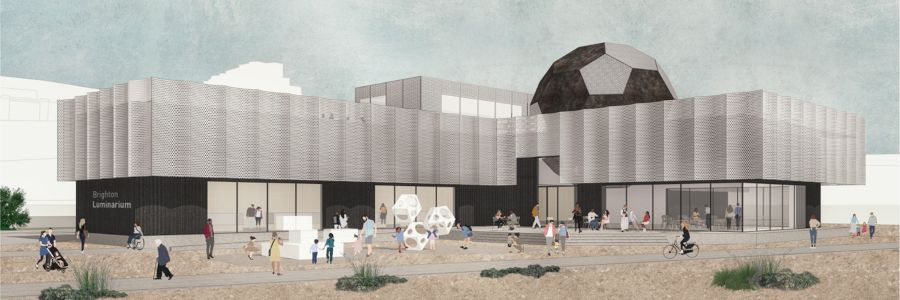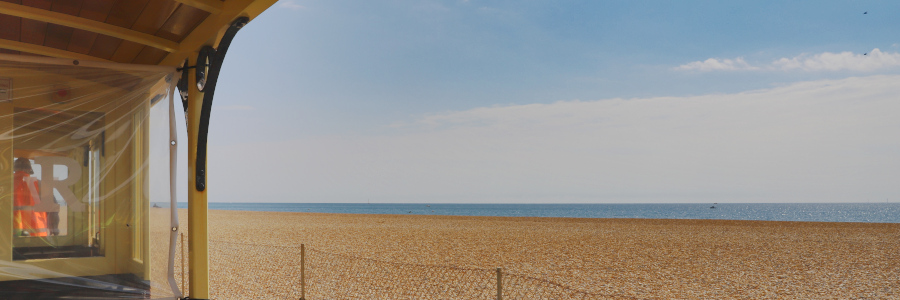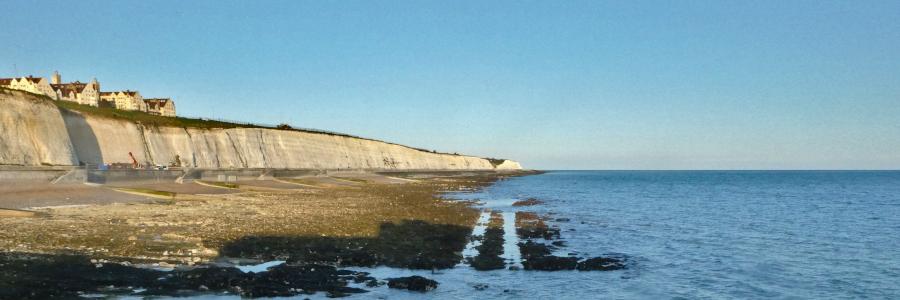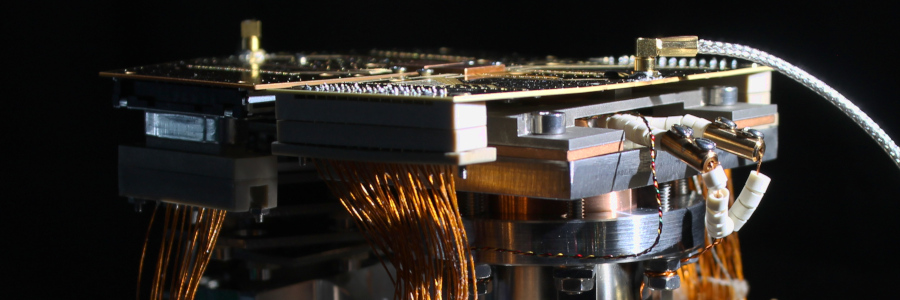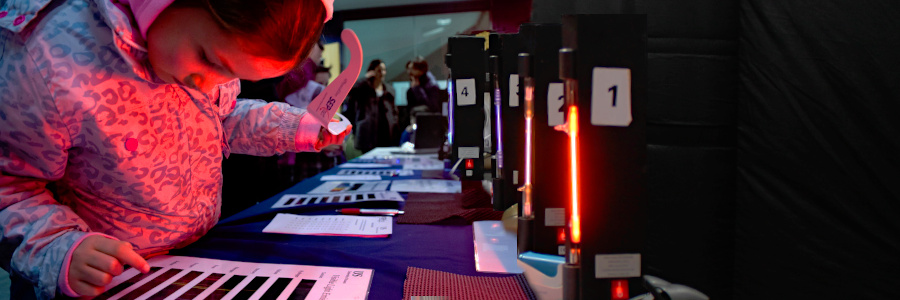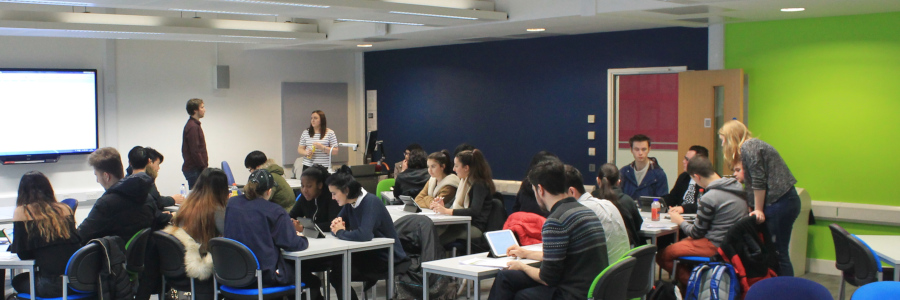How the Brighton Luminarium might look at the
Black Rock site beside the Brighton Marina.
The Vision
The overarching theme of the Brighton Luminarium is light, and the centre will consist of the following elements...
- The Pioneer Zone will explore the achievements of Brighton’s past science and engineering visionaries, such as Magnus Volk who in 1883 introduced both electric lighting to the Royal Pavilion and opened Volk's Electric Railway on Brighton's sea front. Many visitors would travel to the Luminarium on Volk’s Electric Railway, which still travels along the sea front as it has done for 140 years!
- The Astronomy Zone will explore how astronomers study distant light to understand our place in the Universe, and will include a planetarium to present visitors with the latest astronomical discoveries and stunning images of our Universe. The planetarium dome will be in the shape of a buckyball, to acknowledge Sir Harry Kroto being awarded the Nobel Prize for Chemistry in 1996 for the discovery of the carbon-60 molecule at the University of Sussex in Brighton.
- The Quantum Zone will be the world's first quantum museum. Visitors will explore how the quantum nature of light creates the colours that we see all around us in a Quantum arcade, where modern arcade-style games will introduce quantum science to visitors in a fun and engaging way.
- Classrooms will allow school groups to attend syllabus-linked workshops and would be available to hire for corporate or community events outside of school hours. An exhibitions and performance space will also be available, hosting a variety of temporary exhibitions and events (e.g. Brighton Fringe, etc), from photographic exhibitions to open-air theatre.
- A café offering sea views with outdoor seating would become a destination in its own right, and the centre will include a shop selling relevant toys and gifts. Toilet facilities, including a changing places facility, will also be available.
Motivation: Why build the Brighton Luminarium?
- The Brighton Luminarium would be a major tourist attraction, attracting over 300,000 visitors per year.
- Science centres have a proven track record of being popular and commercially successful and welcome over 20 million visitors each year across the UK - yet the nearest to Brighton is a 45-minute drive away.
- The Brighton Luminarium will showcase and promote Brighton’s scientific, digital & creative industries, and raise awareness of Brighton’s world-leading scientific research at its two universities (including Nobel Prize winning research), and the city’s forward-looking ethos.
- Brighton’s Palace Pier, 2km away from Black Rock, is the most popular UK attraction outside London, with almost 5 million visitors each year, and Volk’s Electric Railway, a popular heritage attraction with over 150,000 journeys each year, would act as an accessible link between the Luminarium, Palace Pier & the Aquarium.
- A science and discovery centre in Brighton will support science teaching in schools and colleges, providing curriculum enriching activities in state-of-the-art classrooms for all ages.
- These classrooms will also be available for hire as a unique venue and conference facility, either for corporate events or for local community groups.
- The addition of a new year-round tourist destination in Brighton will also help the city reach a critical number of attractions required to encourage the large number of day and weekend visitors to stay longer in Brighton, to the benefit of the wider local economy.
For all these reasons, we are confident that the Brighton Luminarium will be a success.
